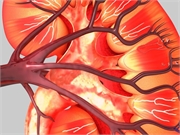No association seen between first-biopsy findings and posttransplant outcomes for deceased donor kidneys
THURSDAY, Jan. 23, 2020 (HealthDay News) — Considerable differences in histologic categorization are seen in sequential biopsies in deceased donor kidneys that undergo multiple procurement biopsies prior to transplantation, according to a study published online Jan. 23 in the Clinical Journal of the American Society of Nephrology.
S. Ali Husain, M.D., M.P.H., from the Columbia University College of Physicians & Surgeons in New York City, and colleagues compiled a cohort of deceased donor kidneys transplanted from Jan. 1, 2006, to Dec. 31, 2016, with one or more procurement biopsies performed. The presence of advanced sclerosis in one or more biopsy compartments was defined as suboptimal histology. For kidneys that underwent multiple procurement biopsies, agreement in optimal versus suboptimal classification was assessed.
Overall, 606 of the 1,011 kidneys in the cohort had multiple procurement biopsies. The researchers found the highest categorical agreement for vascular disease, followed by interstitial fibrosis/tubular atrophy and glomerulosclerosis (κ = 0.17, 0.12, and 0.12, respectively). Histologic agreement in optimal versus suboptimal classification was κ = 0.15. There was no association noted for first-biopsy histology with allograft survival. Even after adjustment for donor and recipient factors, second-biopsy optimal histology was associated with an elevated probability of death-censored allograft survival (adjusted hazard ratio, 0.50).
“This poor reproducibility of procurement biopsy histology provides further evidence against the overreliance on procurement biopsy results in organ utilization decisions without improved standardization in biopsy technique and interpretation,” the authors write.
Copyright © 2020 HealthDay. All rights reserved.








